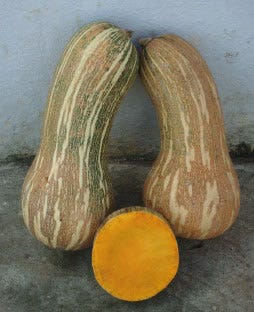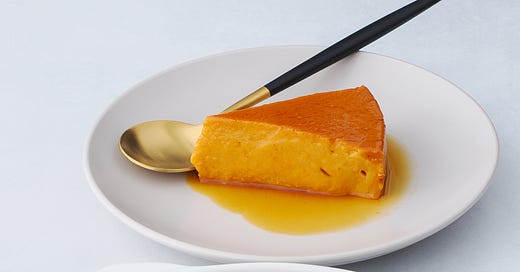Flan de Calabaza (Pumpkin Flan): A Seasonal Twist on a Cuban Classic
At this time last year, I wrote about Thanksgiving and I mentioned that, although I don’t really celebrate, for the last couple of years I had been making Cuban flan to eat on the day. It wasn’t planned, it just sort of happened. That post didn’t have a recipe, but I did share a very good and easy flan recipe in a different post.
This year, I want to share a more seasonal version of flan, which is also very popular in Cuba. It’s flan de calabaza, or pumpkin flan. And I mean seasonal for our American sensibilities that equate pumpkin with fall.
To be clear, the pumpkins available in Cuba are different from the sugar pumpkins in the United States. They are different types of hard squashes. Cuban calabazas look more like butternut squash than pie pumpkin. The flavor, of course, is different, but not so much that they can’t be used interchangeably.

In fact, in the US, unless you make puree from fresh pumpkins, you are likely making your pumpkin pie with butternut squash or any other number of hard squashes that are not necessarily what you think of as pumpkin. Since at least 1957, the USDA has put pumpkins and squashes under the same category, and essentially seen them as one and the same. So even though your can of pumpkin puree says 100% pumpkin, it could very well be something else, either partly or wholly. And that is OK with the FDA too.
But, in the greater scheme of things, that really doesn’t matter. What matters is that, if you’re making your puree, you never use the type of pumpkin sold for carving Halloween decorations. These are known as jack-o’-lantern or field pumpkins, and while technically edible, they are stringy and just not generally pleasant to eat. Sugar pumpkins, also known as pie pumpkins, look like miniature versions of their carving cousins.



